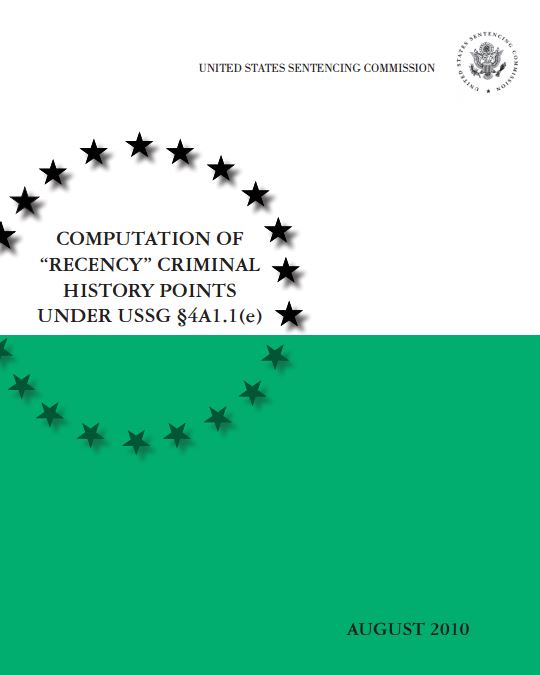Summary

Key Findings
The key findings of the Commission’s study are:
- In fiscal year 2009, the applicability of the recency provision was considered in 38,850 cases, all of which necessarily involve defendants in Criminal History Category II or higher. The provision ultimately was applied in 14,548 of these cases (37.4% of 38,850).
- In two-thirds of the cases receiving recency points, the offender received two additional points for USSG §4A1.1(d) (status) (9,921 of 14,548, 68.2%).
- Of the 14,548 offenders receiving any recency points, these points had an impact on the offender’s calculated criminal history category in only 4,419 cases (30.4% of 14,548 recency applications).
- Based on the analysis of Commission recidivism data on United States citizens, the inclusion of recency points improves the prediction that a recidivist has a higher criminal history score (compared with a non-recidivist) in just ten of 3,018 comparisons for which the remaining subsections of USSG §4A1.1 alone did not correctly predict the higher
- The prison impact analysis revealed that if recency points were not available in fiscal year 2009, 4,189 of the 14,048 offenders receiving recency points would have moved to the next lower criminal history category, resulting in a reduction in their average sentence from 49 months to 41 months (a 16.3% average decrease). After five years, eliminating recency points is estimated to save 1,391 prison beds.
